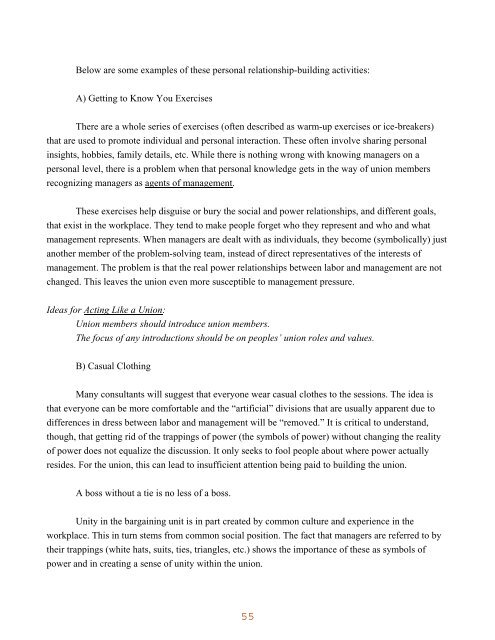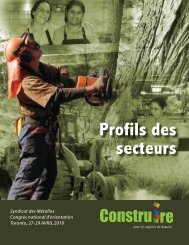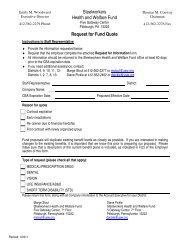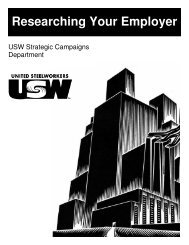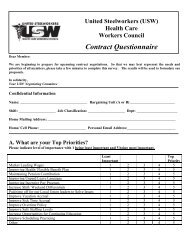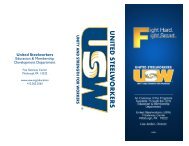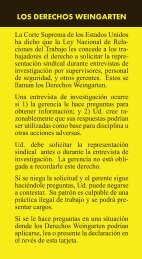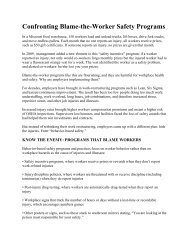Union Approach to Health and Safety: - United Steelworkers
Union Approach to Health and Safety: - United Steelworkers
Union Approach to Health and Safety: - United Steelworkers
Create successful ePaper yourself
Turn your PDF publications into a flip-book with our unique Google optimized e-Paper software.
Below are some examples of these personal relationship-building activities:<br />
A) Getting <strong>to</strong> Know You Exercises<br />
There are a whole series of exercises (often described as warm-up exercises or ice-breakers)<br />
that are used <strong>to</strong> promote individual <strong>and</strong> personal interaction. These often involve sharing personal<br />
insights, hobbies, family details, etc. While there is nothing wrong with knowing managers on a<br />
personal level, there is a problem when that personal knowledge gets in the way of union members<br />
recognizing managers as agents of management.<br />
These exercises help disguise or bury the social <strong>and</strong> power relationships, <strong>and</strong> different goals,<br />
that exist in the workplace. They tend <strong>to</strong> make people forget who they represent <strong>and</strong> who <strong>and</strong> what<br />
management represents. When managers are dealt with as individuals, they become (symbolically) just<br />
another member of the problem-solving team, instead of direct representatives of the interests of<br />
management. The problem is that the real power relationships between labor <strong>and</strong> management are not<br />
changed. This leaves the union even more susceptible <strong>to</strong> management pressure.<br />
Ideas for Acting Like a <strong>Union</strong>:<br />
<strong>Union</strong> members should introduce union members.<br />
The focus of any introductions should be on peoples’ union roles <strong>and</strong> values.<br />
B) Casual Clothing<br />
Many consultants will suggest that everyone wear casual clothes <strong>to</strong> the sessions. The idea is<br />
that everyone can be more comfortable <strong>and</strong> the “artificial” divisions that are usually apparent due <strong>to</strong><br />
differences in dress between labor <strong>and</strong> management will be “removed.” It is critical <strong>to</strong> underst<strong>and</strong>,<br />
though, that getting rid of the trappings of power (the symbols of power) without changing the reality<br />
of power does not equalize the discussion. It only seeks <strong>to</strong> fool people about where power actually<br />
resides. For the union, this can lead <strong>to</strong> insufficient attention being paid <strong>to</strong> building the union.<br />
A boss without a tie is no less of a boss.<br />
Unity in the bargaining unit is in part created by common culture <strong>and</strong> experience in the<br />
workplace. This in turn stems from common social position. The fact that managers are referred <strong>to</strong> by<br />
their trappings (white hats, suits, ties, triangles, etc.) shows the importance of these as symbols of<br />
power <strong>and</strong> in creating a sense of unity within the union.


